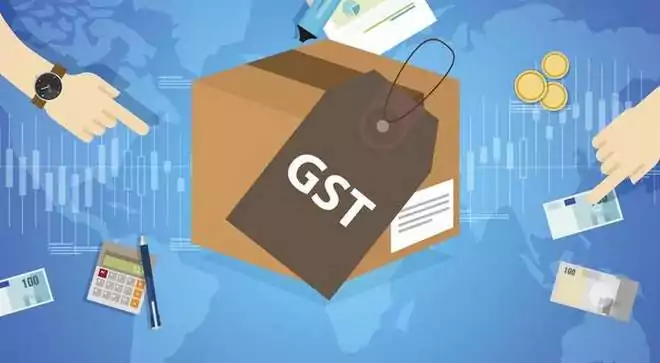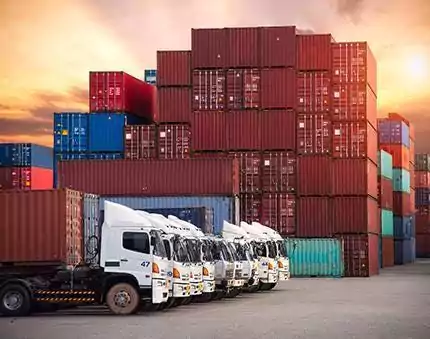GST and its Impacts on Indian SME’s Working Capital
Let’s continue with our conversation about working capital and see how GST impacts the working capital of small and medium scaled enterprises.
 Management of working capital is a chaotic yet necessary task that all businesses have to take care of — as we discussed in our last post, working capital helps to stem the needs that arise from daily operational activities of a business and is required by small and large businesses alike, irrespective of their size.
Management of working capital is a chaotic yet necessary task that all businesses have to take care of — as we discussed in our last post, working capital helps to stem the needs that arise from daily operational activities of a business and is required by small and large businesses alike, irrespective of their size.
July 1, 2017, will always be remembered as a turnaround point for the Indian economy because its when the Goods and Services Tax came into effect all across the country. However, there was a lot of talk and speculation about how GST and its impact would affect the people, businesses, and overall Indian economic landscape since it was an ambitious decision.
GST was created and aimed at collecting indirect taxes in a fair and transparent manner, but small business owners are yet to discover its impact.
With the rollout of GST, business owners have geared up to adapt to the entirely new tax structure. One important component that they have to prepare themselves and their business for, is the optimization of their working capital.
The GST has several implications on working capital of a business as well. Since the rollout of the GST is very close, it is pertinent to understand the ways in which the GST is going to affect this crucial aspect of businesses.
We have put together a list laying out ways in which SMEs (Small and Medium Enterprises) are impacted by the GST in terms of their working capital.
Here are some of the ways GST has impacted working capital of businesses:
- Furtherance of Business Concept:
According to the previous tax system, input tax credit was available only on inputs that were related to taxable output. For expenses that are were related to taxable sales, input credit could not be availed.
However, under GST, a feature called the “Furtherance of Business” has been introduced. Under this, credit is allowed for any kind of business input, irrespective of whether it is directly used for “taxable sales”.
This is a positive development and increases the scope for business to avail an additional line of credit. As a result, the immediate cash requirements have reduced and the flow of working capital flow has gotten better.
2. Timeline of tax payment clogs the flow of capital:
Under the GST regime, the tax is levied when the stock is transferred. As a result, businesses have not been able to claim tax credits till the time of sale, which results in a huge time lag.
And since the timeline of tax payment sees this lag, the working capital levels do experience a drop during this time.
If a business hasn’t foreseen this drop, it may face issues in conducting themselves on an everyday basis. If you are a business owner, make sure you have enough cash reserve so that you can face the rainy day and come out of it smiling.
3. Moving Goods Has Gotten Easier:
 Under the previous tax regime, a lot of time and effort was spent by businesses who had multiple presences across states (warehouses, offices, factories etc.).
Under the previous tax regime, a lot of time and effort was spent by businesses who had multiple presences across states (warehouses, offices, factories etc.).
These businesses were bound to adhere to multiple state laws such as octroi, CST and so on while moving goods across state borders. This burden of tax compliance added to the cost of running each warehouse, increasing the company’s operational costs and therefore its working capital needs.
Under GST, companies no longer need to comply with CST, Octroi, or entry taxes, so it has become simpler and more affordable to move goods across the country.
Thanks to GST, a business can now strategically set up 4 or 5 warehouses to fulfill their demand across all the states and operate them more efficiently and locate them where it makes a better business sense.
4. Impact on the e-commerce resellers:
The government has specified a threshold limit for all the businesses. However, such limit is not applicable in case of E-Commerce sellers. All the businesses carrying out e-commerce activity are required to get registered.
Under the new tax regime, marketplace operators are mandatorily required to deduct a percentage amount as the GST liability of seller and deposit it with the government. This mechanism is being termed as “Tax Collection at Source (TCS)” under the GST law.
Eventually, the marketplace seller will have to file monthly return under GST to claim the credit of TCS collected by the marketplace operator. This will also impact the liquidity and cash flow of these sellers.
5. Numbers Paint An Unfavourable Picture
A majority of chief financial officers from 250 companies across sectors, according to a report, say that the implementation of the Goods and Services Tax (GST) has had a positive impact on their business, even as they identify it as a key industry disruptor, according to a survey.
However, 66% of the CFOs from sectors ranging from consumer business, energy and resources, financial services, healthcare, manufacturing to transportation surveyed said they noted a negative impact on working capital post-GST, and 55% noted an adverse impact on financing costs.
6. It became easy to launch startups:
In the past, entrepreneurs who wanted to launch their small businesses, faced all kinds of hardships. There were many obstacles that came in the form of various laws, legal restrictions, and plans that would dictate the way your business should operate. For instance, some companies had to register in a different kind of VAT, under the necessary law of each state. With the introduction of GST and its effect on Indian economy all such procedures have been centralized. Which means that taxes are streamlined, and small scale business owners can finally launch their companies, or expand their existing organizations. The indirect taxes that have been granted by the state and central governments have been replaced with a tax code that is unified. This decision has reduced startup costs, when starting a new business, and also helped entrepreneurs focus on enhancing their business instead of worrying about being taxed.
7. Human intervention is reduced:
GST’s impact on Indian economy has given rise to many benefits, and one of the major highlights is that human intervention is reduced. The online taxation process has become less stressful because it got rid of the need for multiple interactions within different departments. In the past, the process of filing taxes would be quite time consuming for business owners, thereby reducing the productivity levels of the company.
Under GST, all the compliance procedures have now been transferred online; this means that payments, registrations, refunds and returns will all be done online. Online registration is done to ensure that traders receive their registration certificates on time, and this gets rid of any bureaucracy. Once the compliance procedures are online, then the payments are made on time, they are transparent and have low compliance costs. The refunds take place at a faster pace, and they lead to greater liquidity as well (for the business owners).
SME working capital loan is a major reason that Indian SMEs are looking to expand their companies. When the reporting of a business transaction is enhanced, then being in the tax net will also increase the credibility in the market, which will be a vital asset to business owners in the future.
The business expansion goes hand in hand with capital requirements, and it’s important because it offers a detailed credit history. This will allow access to capital. Since online lending can help SMEs get over any challenges during the startup launch, it’s quite evident that GST is here to stay.
8. The cascading effect is reduced:
Of the significant challenges that small and medium scale businesses had to face was that taxation had a cascading effect. This means that a product would get taxed at various levels of production, which would lead to high costs and low pricing efficiency. Many small businesses noticed that this made their business models quite uncompetitive. The biggest benefit of GST is the value-added tax, which is only levied on the value addition. Hence, if your final GST is Rs. 1000 and you have already paid Rs. 400 on inputs, and then you will have to pay Rs. 600 as net GST; this will reduce the cascading effect too. Many small units utilizing external outsourcing/specialty services for manufacturing their product were paying service taxes on said services. These service taxes didn’t get any credit, and now the problem gets resolved under GST.
In Closing
In conclusion, working capital helps in enhancing the agility and financial growth of a business, especially when the business is classified as an SME.
Under the GST regime, the working capital of a business has been impacted, depending on its type & size. Businesses today must take a leap of faith and place their belief in the technological advancements which will help them manage their working capital.
Cloud-based solutions today serve at the pleasure of business owners with their GST filing features, along with reporting and analytical tools so that they can stay compliant and have a firm grip on their business.
Got something to say? Take the discussion to the comment board below and let us know your thoughts.
